- Skip to primary navigation
- Skip to main content
- Skip to primary sidebar
- Skip to footer
Don't Miss a Post! Subscribe

- Book Summaries
- Books for Teachers
- Research Methodology Books
- Themed Book Lists
- Beyond Books

Selected Reads
A blog for bibliophiles covering everything related to books from reviews and summaries to quotes and open articles.

14 Best Writing Books for Middle and High School Students
By Med Kharbach, PhD | Published: March 23, 2023 | Updated: March 21, 2024
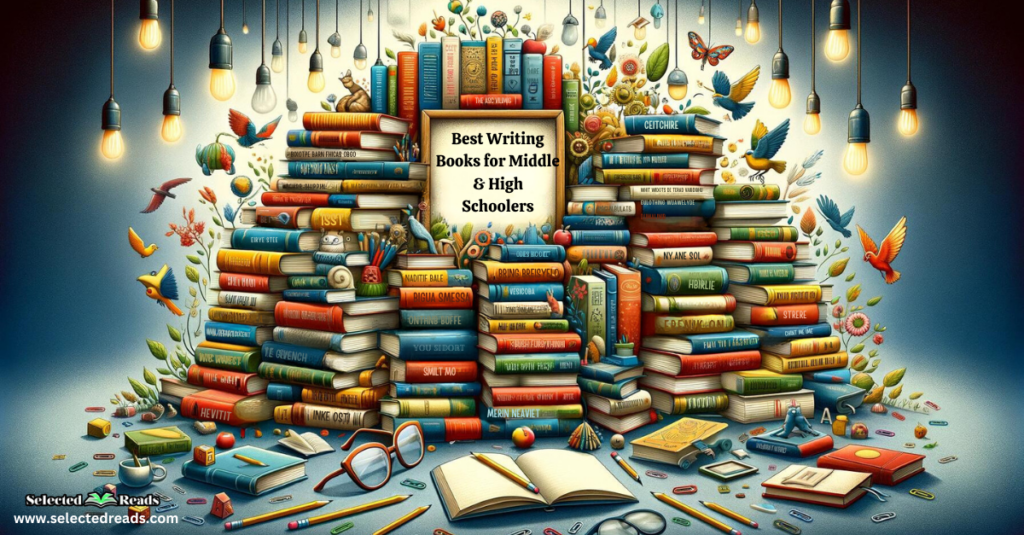
Writing can be a daunting task for middle and high school students. I taught them for many years and I know exactly how they feel about it. I used to tell my students that to be a good writer you need to be a good reader. Unlike other literacy skills, writing is strictly related to reading, the more you read the better writer you become.
[ Related: Best Essay Writing Books for High School Students ]
With this in mind, I went ahead and curated this list of some very good writing books for middle and high school students. From the basics of essay-writing to finding one’s creative voice, these books offer valuable advice and guidance to improve students writing skills. Whether you’re a student yourself or a teacher of middle or high school students, these writing books will provide you with the resources and tools necessary for success.
Writing Books for Middle and High School Students
Here is our collection of writing books for middle and high school students:
1. Be a Better Writer: For School, For Fun, For Anyone Ages 10-15, by Steve Peha, Margot Carmichael Lester
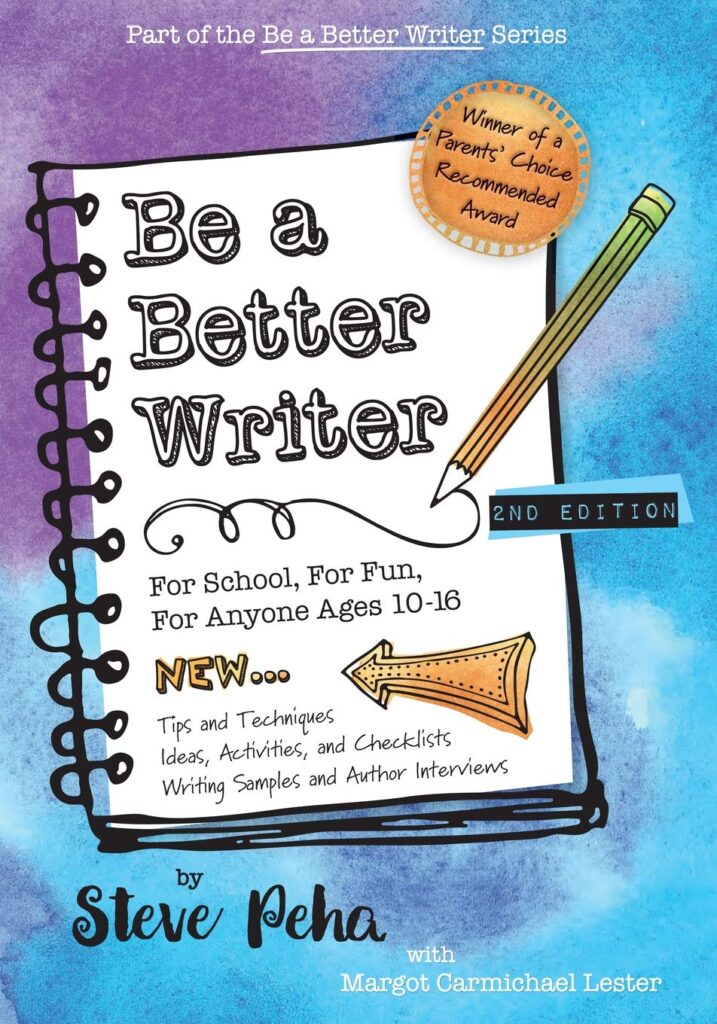
Be a Better Writer: For School, For Fun, For Anyone Ages 10-15 is a book written by Steve Peha and Margot Carmichael Lester to help you become a better writer. This book walks through each of the three sections by providing tips and strategies that will improve your writing.
For school, it includes techniques like What-Why-How and Content-Purpose-Audience to analyze arguments more effectively. For fun, it includes The Five Facts of Fiction to strategize better story lines and description. Finally, the book encourages readers to find their voice, share their stories, and become a better writer now.
2. How to Write a 5-Paragraph Essay Step-by-Step: Step-by-Step Study Skills , by J Matthews
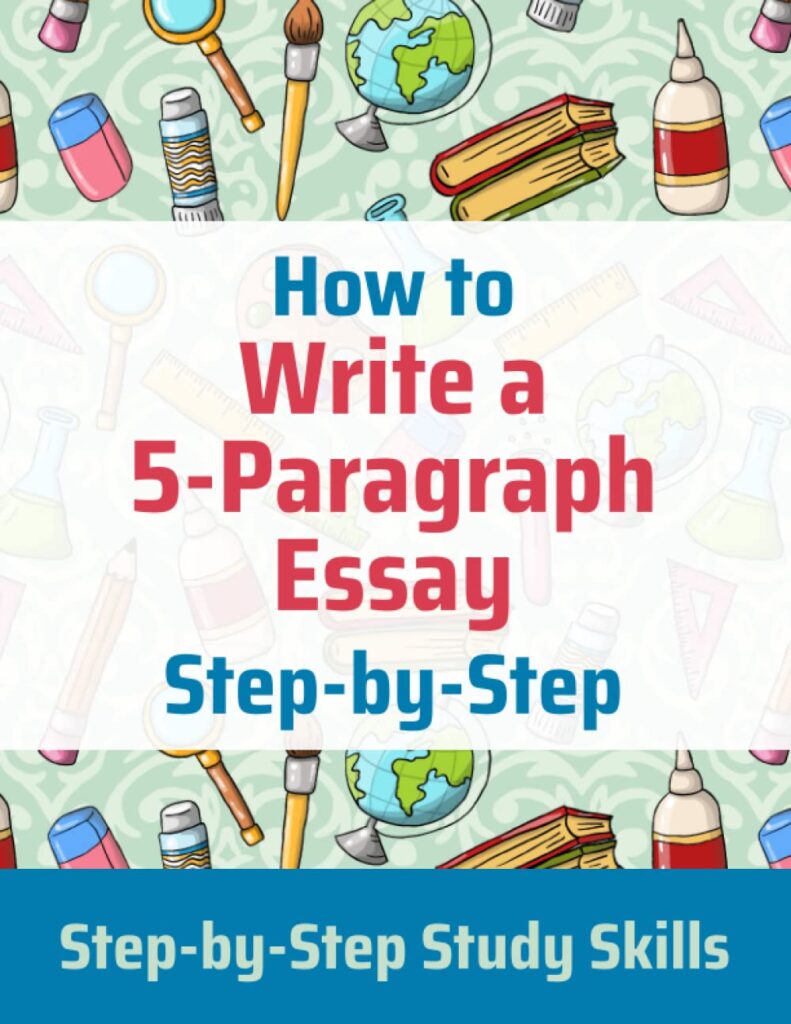
How to Write a 5-Paragraph Essay Step-by-Step: Step-by-Step Study Skills, by J Matthews is the perfect companion for any learner looking to improve their writing skills. Not only does this workbook provide a clear, step-by-step approach to essay writing, but it also gives students the confidence that they can master any essay assignment. This workbook covers all the essential aspects of an essay, from pre-writing to editing.
3. Student Voice: 100 Argument Essays by Teens on Issues That Matter to Them , by Katherine Schulten
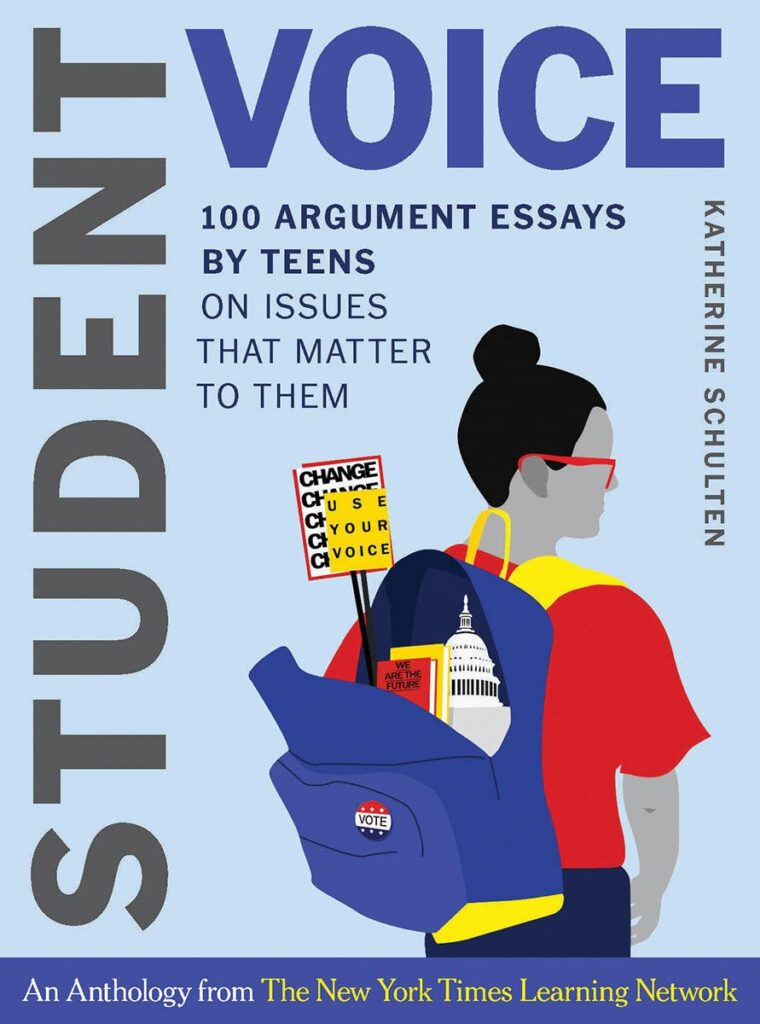
Student Voice: 100 Argument Essays by Teens on Issues That Matter to Them, by Katherine Schulten is an anthology of essays written by young people on a variety of topics. This book not only provides an opportunity to learn from the perspectives of someone similar in age, but it is also a great way to understand the issues that are important to today’s teens.
The essays in this book cover topics such as technology, gender roles, gun control, and race. Each of the essays has been carefully selected to showcase both the student’s writing style and their ability to persuasively argue their point of view.
4. How To Write Any High School Essay: The Essential Guide , by Jesse Liebman
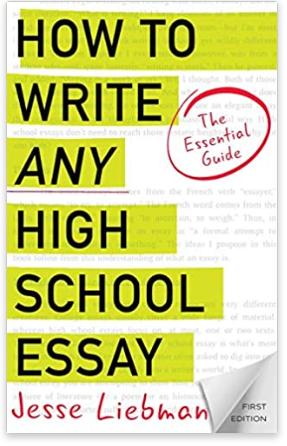
How To Write Any High School Essay: The Essential Guide, by Jesse Liebman, is a comprehensive guide to writing any high school essay, no matter the teacher or subject. It is grounded in the real-world experience of tutoring in New York City’s top schools and provides clear and creative guidance for high school writers at all levels, as well as middle schoolers looking to get ahead.
Liebman’s guide outlines the steps for writing an essay and provides sample essays to help writers develop their ideas, express them convincingly, and use their time effectively. Additionally, quick tips are provided throughout the guide to help writers stay focused and organized. How To Write Any High School Essay is essential for any student looking to excel in their English or History classes.
5. Grammar Girl Presents the Ultimate Writing Guide for Students , by Mignon Fogarty
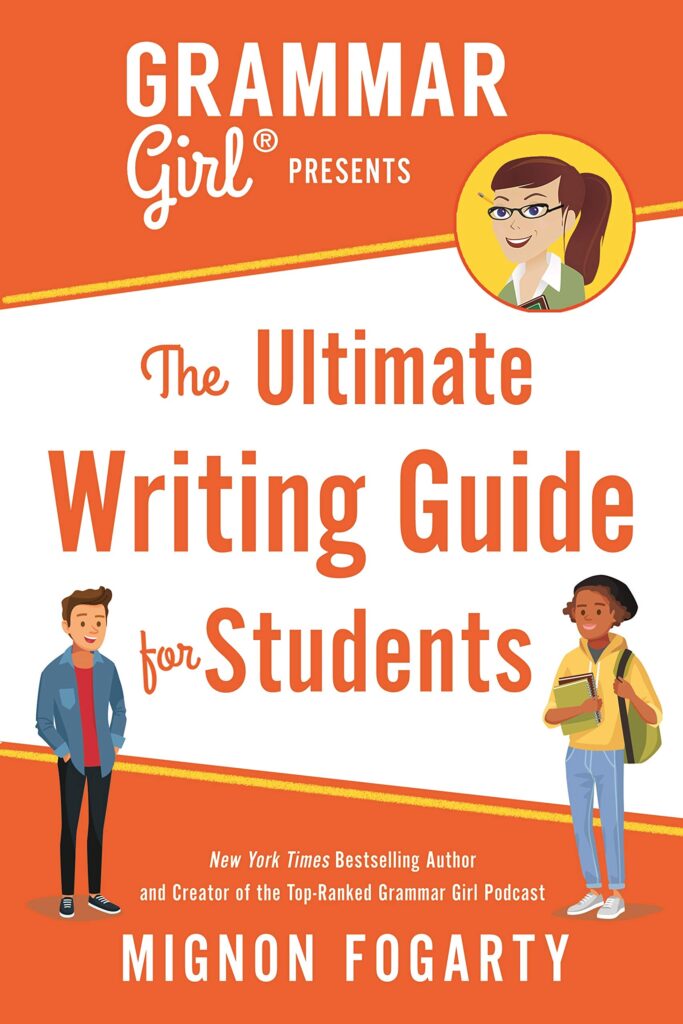
Grammar Girl Presents the Ultimate Writing Guide for Students, written by Mignon Fogarty, is a comprehensive guide for all levels of students. With the help of this guide, readers will learn how to write proper sentences and punctuation, as well as how to use their own style of writing.
In the book, Fogarty provides grammar rules in a humorous and engaging style, as well as pop quizzes to help readers understand each lesson. The book will also cover grammar and punctuation in different contexts, such as the parts of speech and how to use them properly. Finally, the book contains a writing style guide chapter, so readers can learn how to write in their own style.
6. Write Beside Them: Risk, Voice, and Clarity in High School Writing , by Penny Kittle

Write Beside Them: Risk, Voice, and Clarity in High School Writing, by Penny Kittle is a comprehensive guide for English/language arts teachers on how to teach writing. It explains best practices, instructional frameworks, genre work, skills work, assessment techniques, and Penny’s own strategies.
She provides detailed teaching information, minilessons for students’ immediate needs, profiles of individual writers, study guide, reproducibles, writing samples from writers and students, suggestions on nurturing your own writing life, and a helpful FAQ.
7. Unjournaling: Daily Writing Exercises That Are Not Personal, Not Introspective, Not Boring !, by Dawn DiPrince, Cheryl Miller Thurston

Unjournaling: Daily Writing Exercises That Are Not Personal, Not Introspective, Not Boring! is an innovative book written by Dawn DiPrince and Cheryl Miller Thurston. In it, the authors provide 200 unique writing prompts that are entirely impersonal but still engaging for students of all ages.
For example, one prompt is “Explain a new invention that would make life easier for everyone” and another is “Write a bedtime story that all the world’s cultures could agree with.” Along with these questions, the authors provide sample responses to help readers visualize how to answer these questions.
8. Burn After Writing Teen. New Edition , by Rhiannon Shove
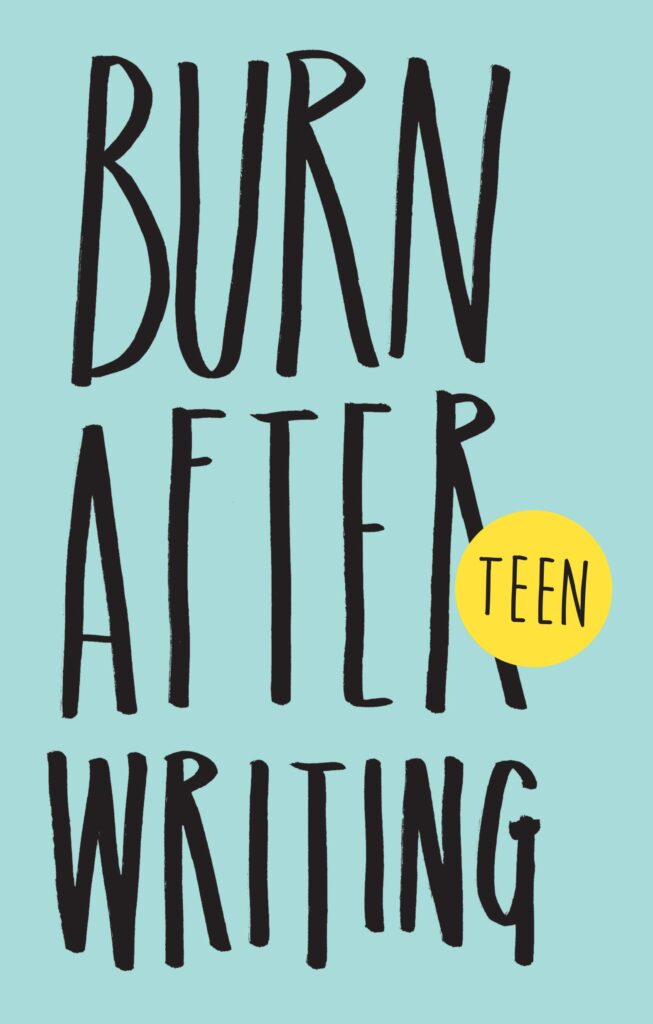
Burn After Writing Teen, by Rhiannon Shove is an interactive book designed to help young people explore who they are and who they want to be. It includes questions such as “What are your hopes and dreams for the future”, “What do you wish you had more time to do” and “What makes you unique?”
The book provides thought-provoking and inspiring activities, and encourages young people to be brave and open-minded in their responses. The book also offers an opportunity for teens to express themselves honestly, without having to worry about judgement from their peers. And at the end of it all, they can burn the book and start fresh. Burn After Writing Teen is a great tool to help teens explore their identity and learn more about themselves.
9. Rip the Page!: Adventures in Creative Writing , by Karen Benke
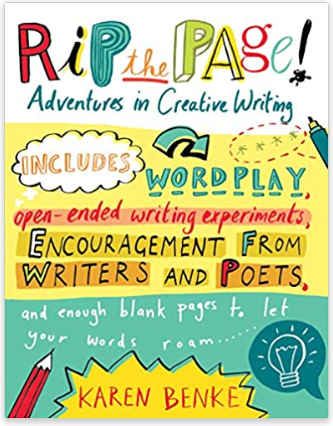
Rip the Page!: Adventures in Creative Writing, by Karen Benke is an instructional guide for unlocking creative writing potential. It includes exercises, prompts, and words to spark creativity and help writers break through writer’s block.
Readers are provided with lists of “big”, “small”, “gross-out”, and “favorite” words to help them come up with possibilities for their writing. In addition, Benke encourages readers to take dares and double-dares, which can be used to create outrageous paragraphs combining truth and lies. Finally, the book includes letters of encouragement from famous authors such as Annie Barrows, Naomi Shihab Nye, Lemony Snicket, and more.
10. Writing Magic: Creating Stories That Fly , by Gail Carson Levine

In Writing Magic: Creating Stories That Fly, Gail Carson Levine, a Newberry Honor author, provides aspiring authors with the tools they need to create captivating stories. She offers advice on generating ideas and developing characters, as well as how to craft compelling dialogue and beginnings and endings. Writing Magic also offers exercises to spark creativity and get over writer’s block.
Levine shares her wisdom with a unique, humorous voice that encourages aspiring authors to unlock their creative potential and use it to write stories that will stay in the hearts of readers. With Writing Magic, Levine promises readers they can bring their own special magic to the page and create unforgettable stories.
11. Spilling Ink: A Young Writer’s Handbook , by Ellen Potter, Anne Mazer

Spilling Ink: A Young Writer’s Handbook, by Ellen Potter and Anne Mazer, is an invaluable guidebook for aspiring young writers. It provides practical advice on how to find one’s voice, develop characters and plots, make revisions, and overcome writer’s block.
The authors include anecdotes from their own experiences as well as fun writing prompts to help jump-start projects. This book is filled with encouragement and guidance through every step of the writing process, making it an essential tool for young writers who are looking for their place in the literary world.
12. Writers INC: A Student Handbook for Writing and Learning , by Patrick Sebranek, Dave Kemper, Verne Meyer
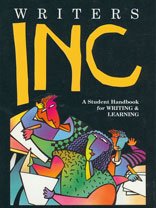
Writers INC: A Student Handbook for Writing and Learning, by Patrick Sebranek, Dave Kemper, Verne Meyer is an invaluable resource for students and professionals alike. It covers everything related to writing, from the writing process to writing essays and research papers. It provides readers with guidelines, models, rules, and friendly advice to help them with their writing. T
he book also includes sections on reading, learning, speaking, and thinking to make it a comprehensive reference book. In addition to all the information provided, Writers Inc also contains full-color maps, useful tables and charts, and historical documents.
14. Essay Writing for High School Students , by Alexander L. Terego

Essay Writing for High School Students, by Alexander L. Terego is a comprehensive guide to help students write better essays. It encourages creativity and critical thinking by introducing a “thinking outside the box” approach.
The book provides tips on how to develop a point of view and includes step-by-step instructions, along with exercises and sample essays, to illustrate the techniques. It also includes strategies for developing an effective thesis statement and constructing a strong argument.
Final thoughts
In wrapping up this exploration of invaluable writing resources for middle and high school students, I hope you’ve discovered some gems to inspire and guide young writers on their journey. The books listed offer a treasure trove of advice, strategies, and exercises tailored to developing writers, each designed to illuminate the path from initial concept to polished piece. I highly recommend exploring these titles, whether you’re a student seeking to refine your craft or an educator aiming to inspire your charges.
Related Posts
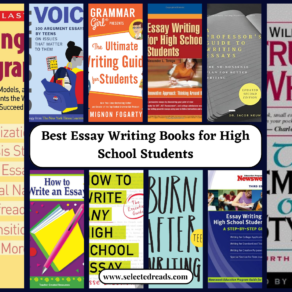
Meet Med Kharbach, PhD
Dr. Med Kharbach is an influential voice in the global educational landscape, with an extensive background in educational studies and a decade-long experience as a K-12 teacher. Holding a Ph.D. from Mount Saint Vincent University in Halifax, Canada, he brings a unique perspective to the educational world by integrating his profound academic knowledge with his hands-on teaching experience. Dr. Kharbach's academic pursuits encompass curriculum studies, discourse analysis, language learning/teaching, language and identity, emerging literacies, educational technology, and research methodologies. His work has been presented at numerous national and international conferences and published in various esteemed academic journals.
Join our mailing list
Subscribe to our email list for bite-sized book summaries, curated recommendations, and exclusive content.
Subscribe for exclusive resources .
You have successfully joined our subscriber list.

The Best Books for Teaching High School Writing
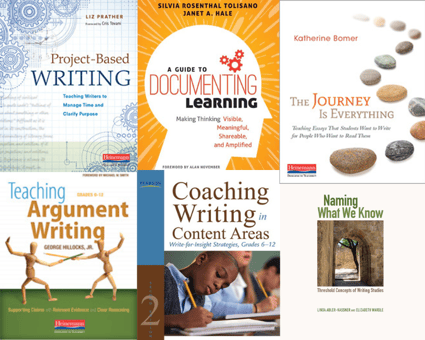
Writing for Learning and the Love of It
“…up until around a week ago I had never found much joy doing research for an essay and inputting information from a source into my writing. That is until I wrote my first essay in my college writing class… it was the first time I had a feeling of joy and wasn’t just ‘getting it over with'" (College English student reflection essay)
Books for Renewing Purpose and Vision for Writing
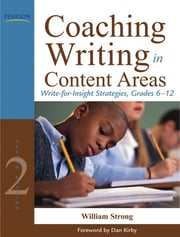
Books to Help You Empower Writers
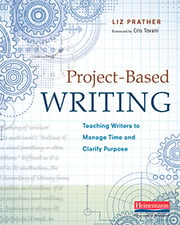
Books to Think About the Big Picture: Philosophy for Learning, for Life
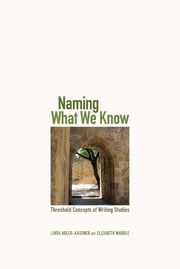
Share this post:
Similar Blogs

Teaching the Writing Process
Beyond the traditional 5-step writing process.
Traditionally, writing has been taught as a linear...

9 Quick Strategies for Teaching with AI

30+ Creative Writing Prompts for High School Students
By: Asiyah Jilani
Here are some unique creative writing prompts for high school that students can...

- Trial Toolbox for School - Australia
- Terms and Conditions / Privacy Policy
- Writer's Toolbox Workshop with Dr Hunter
- NZ Enrolment Spreadsheet Upload Free Trial
- AU Enrolment Spreadsheet Upload Free Trial
- The Sentence Train Revolution
Write that Essay! Book Series
- Writing Diagnostic Test
- Young Writer Resources
- High School Resources
- Professional Development Terms and Conditions
- Classroom Resources
- Conferences
- The Writer's Toolbox Story
- DR IAN HUNTER
- The Hunter Writing System
- Helping Your School
- New Zealand
- Writer's Toolbox Community
Write that Essay! High School Edition
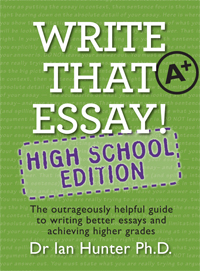
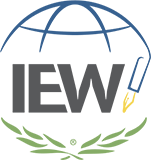
IEW® in High School
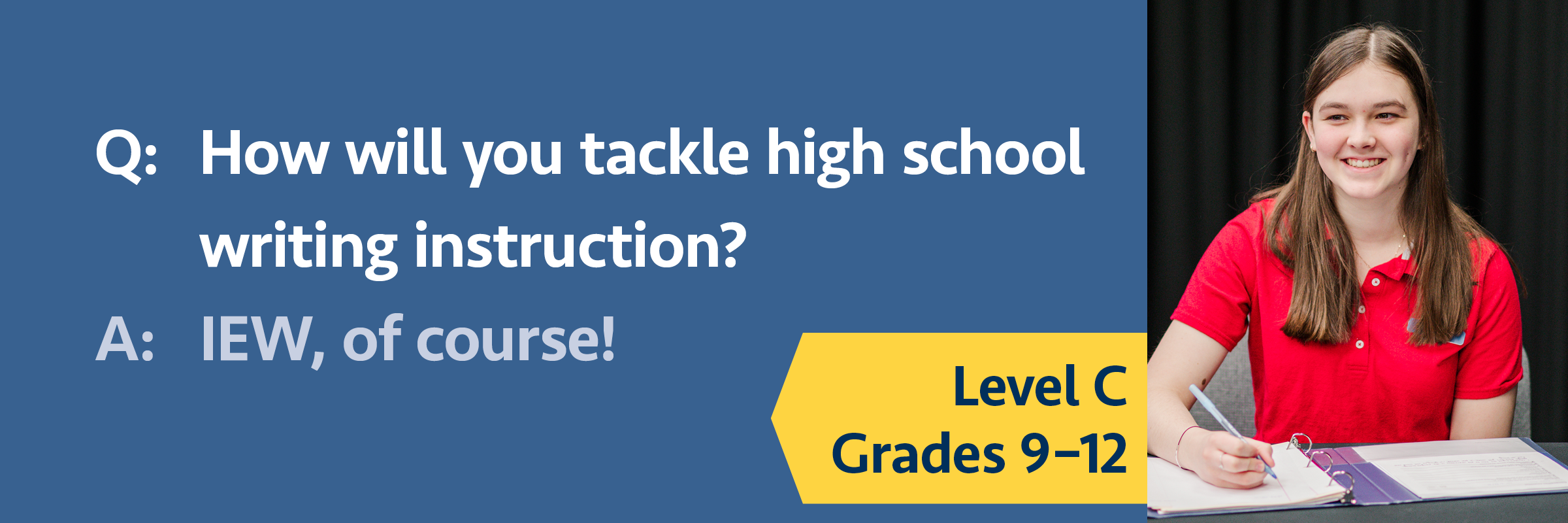
The high school years can be daunting, but writing does not have to be. IEW teaches students how to navigate the essays, research papers, and literary analysis that they will need to succeed in high school and beyond. IEW’s pathway for high school is designed to help beginning students gain confidence while continuing to bring new insights and challenges to those who have many years of IEW experience.
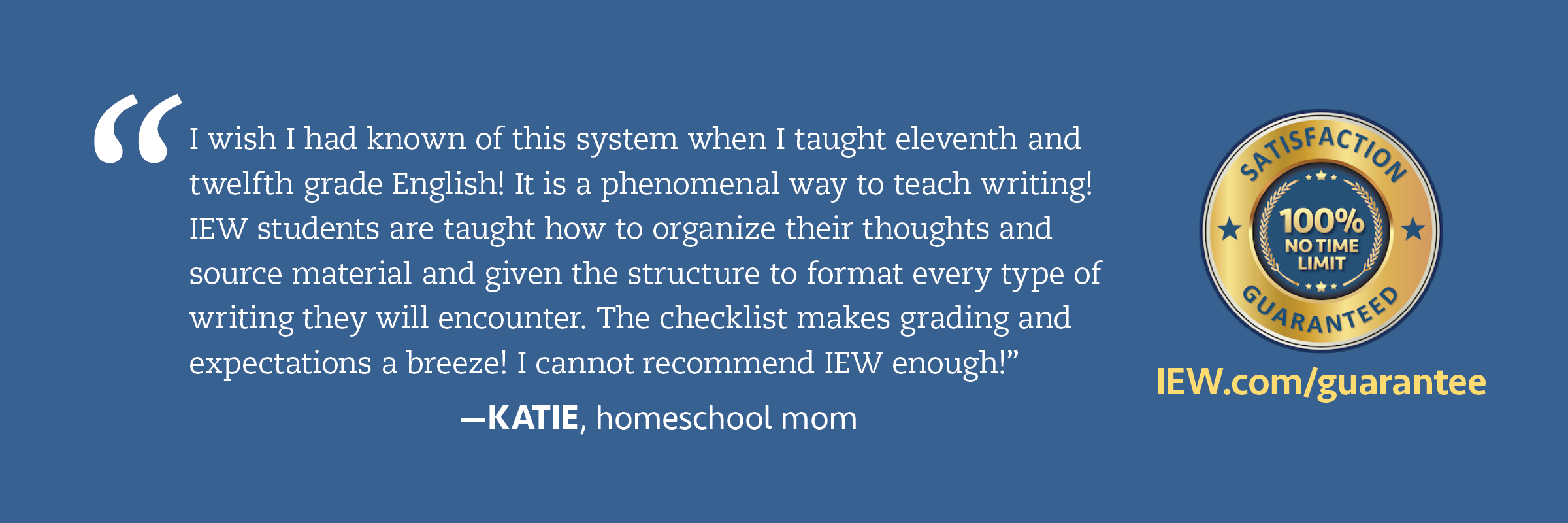
Structure and Style ® for Students: Year 1 Level C
In this course, join Andrew Pudewa as he leads students on a 24-week writing journey using IEW’s Structure and Style approach. Students reading at a 9th grade level or higher will take delight in Mr. Pudewa’s humorous, incremental, and effective writing lessons. The curriculum provides clear daily assignments and includes vocabulary words, literature suggestions, and lesson plans for teachers. Easy to use and affordable, Structure and Style for Students brings a successful solution to your writing lessons—guaranteed! Try three weeks free !
Structure and Style ® for Students: Year 2 Level C
Take students to the next level in their Structure and Style writing journey! Twenty-four more weeks of incredible writing instruction await with the humorous and engaging Andrew Pudewa. Students who have completed Year 1 Level C and are ready for their second year of the Structure and Style for Students video course will enjoy reviewing and refining the nine previously learned IEW units and response to literature, then pressing on into full literary analysis. The curriculum provides clear daily assignments and includes vocabulary words, literature suggestions, and lesson plans for teachers. Easy to use and affordable, the second year of Structure and Style for Students builds on the skills learned in the previous video course and brings a successful solution to your writing lessons—guaranteed!
University-Ready Writing
In this twelve-week video course, high school and college students learn effective note-taking strategies as they write précis (summaries) and essays, tackling assignments of varying lengths from one paragraph to several pages. With tips and tools for writing an abstract, creating and arranging content, citing sources, applying various style guides, using literary devices, and writing on-demand essays, this curriculum will prepare your students for university writing assignments. Try two weeks free !
Introduction to Public Speaking
In this twelve-week course, middle- and high-school students learn memory and delivery techniques as they write and present five speeches: self-introductory, narrative, expository, persuasive, and impromptu. Students evaluate recorded speeches in preparation for self-evaluation. This self-explanatory program empowers teachers to help students become competent and confident public speakers. Try two weeks free !
Advanced U.S. History-Based Writing Lessons†
Follow the course of U.S. history from Explorers to Modern Times while learning to write with structure and style.
Bible-Based Writing Lessons†
Delve into Bible stories and themes while learning to write with structure and style.
Phonetic Zoo Spelling Level C
Looking for a new approach to spelling? This phonics-based program uses auditory input to ensure that the correct spelling of each word is absorbed by the brain. The audio allows students to work independently much of the time while allowing for the repetition needed for mastery.
† Contains distinctly Christian content
What might a pathway look like for a student starting out with IEW in ninth grade?
If your student is reading at grade level, we recommend starting with the Structure and Style for Students: Year 1 Level C Premier package for you and your student in ninth grade. Tenth grade would be a good time to use Windows to the World taught in conjunction with Teaching the Classics or taught as a one-semester class paired with Introduction to Public Speaking. For eleventh grade, use Structure and Style for Students: Year 2 Level C. Andrew Pudewa discusses additional options for your high school student in his conference talk Hacking High School: Rethinking the Teen Years . Grammar, spelling, public speaking, and entrepreneurship can be added as well. Call, chat, or email us for additional support with making decisions!
I have a high school senior. Where should I start with IEW to make sure he gets as much writing instruction as possible before graduation?
Structure and Style for Students: Year 1 Level C provides a solid foundation in writing while also expanding into more advanced essay models such as research papers and persuasive essays. Take it one step further and hone your student’s grammar expertise before he enters college or the workforce. Fix It!™ Grammar will provide you with a full-year grammar course. In the Fix It! Grammar language arts and grammar curriculum, students internalize the rules instead of just memorizing them. That’s because Fix It! Grammar encourages students to critically analyze an ongoing story by searching for and fixing embedded errors, and in the process, students incorporate accurate punctuation and correct grammar more easily into their own compositions. To ensure you start the program at your student’s level of ability, we recommend reviewing the skills listed for each level on the Fix It! Grammar landing page.
Our 2020-21 Writing Curriculum for Middle and High School
A flexible, seven-unit program based on the real-world writing found in newspapers, from editorials and reviews to personal narratives and informational essays.

Update, Aug. 3, 2023: Find our 2023-24 writing curriculum here.
Our 2019-20 Writing Curriculum is one of the most popular new features we’ve ever run on this site, so, of course, we’re back with a 2020-21 version — one we hope is useful whether you’re teaching in person , online , indoors , outdoors , in a pod , as a homeschool , or in some hybrid of a few of these.
The curriculum detailed below is both a road map for teachers and an invitation to students. For teachers, it includes our writing prompts, mentor texts, contests and lesson plans, and organizes them all into seven distinct units. Each focuses on a different genre of writing that you can find not just in The Times but also in all kinds of real-world sources both in print and online.
But for students, our main goal is to show young people they have something valuable to say, and to give those voices a global audience. That’s always been a pillar of our site, but this year it is even more critical. The events of 2020 will define this generation, and many are living through them isolated from their ordinary communities, rituals and supports. Though a writing curriculum can hardly make up for that, we hope that it can at least offer teenagers a creative outlet for making sense of their experiences, and an enthusiastic audience for the results. Through the opportunities for publication woven throughout each unit, we want to encourage students to go beyond simply being media consumers to become creators and contributors themselves.
So have a look, and see if you can find a way to include any of these opportunities in your curriculum this year, whether to help students document their lives, tell stories, express opinions, investigate ideas, or analyze culture. We can’t wait to hear what your students have to say!
Each unit includes:
Writing prompts to help students try out related skills in a “low stakes” way.
We publish two writing prompts every school day, and we also have thematic collections of more than 1,000 prompts published in the past. Your students might consider responding to these prompts on our site and using our public forums as a kind of “rehearsal space” for practicing voice and technique.
Daily opportunities to practice writing for an authentic audience.
If a student submits a comment on our site, it will be read by Times editors, who approve each one before it gets published. Submitting a comment also gives students an audience of fellow teenagers from around the world who might read and respond to their work. Each week, we call out our favorite comments and honor dozens of students by name in our Thursday “ Current Events Conversation ” feature.
Guided practice with mentor texts .
Each unit we publish features guided practice lessons, written directly to students, that help them observe, understand and practice the kinds of “craft moves” that make different genres of writing sing. From how to “show not tell” in narratives to how to express critical opinions , quote or paraphrase experts or craft scripts for podcasts , we have used the work of both Times journalists and the teenage winners of our contests to show students techniques they can emulate.
“Annotated by the Author” commentaries from Times writers — and teenagers.
As part of our Mentor Texts series , we’ve been asking Times journalists from desks across the newsroom to annotate their articles to let students in on their writing, research and editing processes, and we’ll be adding more for each unit this year. Whether it’s Science writer Nicholas St. Fleur on tiny tyrannosaurs , Opinion writer Aisha Harris on the cultural canon , or The Times’s comics-industry reporter, George Gene Gustines, on comic books that celebrate pride , the idea is to demystify journalism for teenagers. This year, we’ll be inviting student winners of our contests to annotate their work as well.
A contest that can act as a culminating project .
Over the years we’ve heard from many teachers that our contests serve as final projects in their classes, and this curriculum came about in large part because we want to help teachers “plan backwards” to support those projects.
All contest entries are considered by experts, whether Times journalists, outside educators from partner organizations, or professional practitioners in a related field. Winning means being published on our site, and, perhaps, in the print edition of The New York Times.
Webinars and our new professional learning community (P.L.C.).
For each of the seven units in this curriculum, we host a webinar featuring Learning Network editors as well as teachers who use The Times in their classrooms. Our webinars introduce participants to our many resources and provide practical how-to’s on how to use our prompts, mentor texts and contests in the classroom.
New for this school year, we also invite teachers to join our P.L.C. on teaching writing with The Times , where educators can share resources, strategies and inspiration about teaching with these units.
Below are the seven units we will offer in the 2020-21 school year.
September-October

Unit 1: Documenting Teenage Lives in Extraordinary Times
This special unit acknowledges both the tumultuous events of 2020 and their outsized impact on young people — and invites teenagers to respond creatively. How can they add their voices to our understanding of what this historic year will mean for their generation?
Culminating in our Coming of Age in 2020 contest, the unit helps teenagers document and respond to what it’s been like to live through what one Times article describes as “a year of tragedy, of catastrophe, of upheaval, a year that has inflicted one blow after another, a year that has filled the morgues, emptied the schools, shuttered the workplaces, swelled the unemployment lines and polarized the electorate.”
A series of writing prompts, mentor texts and a step-by-step guide will help them think deeply and analytically about who they are, how this year has impacted them, what they’d like to express as a result, and how they’d like to express it. How might they tell their unique stories in ways that feel meaningful and authentic, whether those stories are serious or funny, big or small, raw or polished?
Though the contest accepts work across genres — via words and images, video and audio — all students will also craft written artist’s statements for each piece they submit. In addition, no matter what genre of work students send in, the unit will use writing as a tool throughout to help students brainstorm, compose and edit. And, of course, this work, whether students send it to us or not, is valuable far beyond the classroom: Historians, archivists and museums recommend that we all document our experiences this year, if only for ourselves.
October-November
Unit 2: The Personal Narrative
While The Times is known for its award-winning journalism, the paper also has a robust tradition of publishing personal essays on topics like love , family , life on campus and navigating anxiety . And on our site, our daily writing prompts have long invited students to tell us their stories, too. Our 2019 collection of 550 Prompts for Narrative and Personal Writing is a good place to start, though we add more every week during the school year.
In this unit we draw on many of these resources, plus some of the 1,000-plus personal essays from the Magazine’s long-running Lives column , to help students find their own “short, memorable stories ” and tell them well. Our related mentor-text lessons can help them practice skills like writing with voice , using details to show rather than tell , structuring a narrative arc , dropping the reader into a scene and more. This year, we’ll also be including mentor text guided lessons that use the work of the 2019 student winners.
As a final project, we invite students to send finished stories to our Second Annual Personal Narrative Writing Contest .
DECEMBER-January
Unit 3: The Review
Book reports and literary essays have long been staples of language arts classrooms, but this unit encourages students to learn how to critique art in other genres as well. As we point out, a cultural review is, of course, a form of argumentative essay. Your class might be writing about Lizzo or “ Looking for Alaska ,” but they still have to make claims and support them with evidence. And, just as they must in a literature essay, they have to read (or watch, or listen to) a work closely; analyze it and understand its context; and explain what is meaningful and interesting about it.
In our Mentor Texts series , we feature the work of Times movie , restaurant , book and music critics to help students understand the elements of a successful review. In each one of these guided lessons, we also spotlight the work of teenage contest winners from previous years.
As a culminating project, we invite students to send us their own reviews of a book, movie, restaurant, album, theatrical production, video game, dance performance, TV show, art exhibition or any other kind of work The Times critiques.
January-February
Unit 4: Informational Writing
Informational writing is the style of writing that dominates The New York Times as well as any other traditional newspaper you might read, and in this unit we hope to show students that it can be every bit as engaging and compelling to read and to write as other genres. Via thousands of articles a month — from front-page reporting on politics to news about athletes in Sports, deep data dives in The Upshot, recipes in Cooking, advice columns in Style and long-form investigative pieces in the magazine — Times journalists find ways to experiment with the genre to intrigue and inform their audiences.
This unit invites students to take any STEM-related discovery, process or idea that interests them and write about it in a way that makes it understandable and engaging for a general audience — but all the skills we teach along the way can work for any kind of informational writing. Via our Mentor Texts series, we show them how to hook the reader from the start , use quotes and research , explain why a topic matters and more. This year we’ll be using the work of the 2020 student winners for additional mentor text lessons.
At the end of the unit, we invite teenagers to submit their own writing to our Second Annual STEM writing contest to show us what they’ve learned.
March-April
Unit 5: Argumentative Writing
The demand for evidence-based argumentative writing is now woven into school assignments across the curriculum and grade levels, and you couldn’t ask for better real-world examples than what you can find in The Times Opinion section .
This unit will, like our others, be supported with writing prompts, mentor-text lesson plans, webinars and more. We’ll also focus on the winning teenage writing we’ve received over the six years we’ve run our related contest.
At a time when media literacy is more important than ever, we also hope that our annual Student Editorial Contest can serve as a final project that encourages students to broaden their information diets with a range of reliable sources, and learn from a variety of perspectives on their chosen issue.
To help students working from home, we also have an Argumentative Unit for Students Doing Remote Learning .
Unit 6: Writing for Podcasts
Most of our writing units so far have all asked for essays of one kind or another, but this spring contest invites students to do what journalists at The Times do every day: make multimedia to tell a story, investigate an issue or communicate a concept.
Our annual podcast contest gives students the freedom to talk about anything they want in any form they like. In the past we’ve had winners who’ve done personal narratives, local travelogues, opinion pieces, interviews with community members, local investigative journalism and descriptions of scientific discoveries.
As with all our other units, we have supported this contest with great examples from The Times and around the web, as well as with mentor texts by teenagers that offer guided practice in understanding elements and techniques.
June-August
Unit 7: Independent Reading and Writing
At a time when teachers are looking for ways to offer students more “voice and choice,” this unit, based on our annual summer contest, offers both.
Every year since 2010 we have invited teenagers around the world to add The New York Times to their summer reading lists and, so far, 70,000 have. Every week for 10 weeks, we ask participants to choose something in The Times that has sparked their interest, then tell us why. At the end of the week, judges from the Times newsroom pick favorite responses, and we publish them on our site.
And we’ve used our Mentor Text feature to spotlight the work of past winners , explain why newsroom judges admired their thinking, and provide four steps to helping any student write better reader-responses.
Because this is our most open-ended contest — students can choose whatever they like, and react however they like — it has proved over the years to be a useful place for young writers to hone their voices, practice skills and take risks . Join us!

Essay Writing: A complete guide for students and teachers
P LANNING, PARAGRAPHING AND POLISHING: FINE-TUNING THE PERFECT ESSAY
Essay writing is an essential skill for every student. Whether writing a particular academic essay (such as persuasive, narrative, descriptive, or expository) or a timed exam essay, the key to getting good at writing is to write. Creating opportunities for our students to engage in extended writing activities will go a long way to helping them improve their skills as scribes.
But, putting the hours in alone will not be enough to attain the highest levels in essay writing. Practice must be meaningful. Once students have a broad overview of how to structure the various types of essays, they are ready to narrow in on the minor details that will enable them to fine-tune their work as a lean vehicle of their thoughts and ideas.

In this article, we will drill down to some aspects that will assist students in taking their essay writing skills up a notch. Many ideas and activities can be integrated into broader lesson plans based on essay writing. Often, though, they will work effectively in isolation – just as athletes isolate physical movements to drill that are relevant to their sport. When these movements become second nature, they can be repeated naturally in the context of the game or in our case, the writing of the essay.
THE ULTIMATE NONFICTION WRITING TEACHING RESOURCE

- 270 pages of the most effective teaching strategies
- 50+ digital tools ready right out of the box
- 75 editable resources for student differentiation
- Loads of tricks and tips to add to your teaching tool bag
- All explanations are reinforced with concrete examples.
- Links to high-quality video tutorials
- Clear objectives easy to match to the demands of your curriculum
Planning an essay

The Boys Scouts’ motto is famously ‘Be Prepared’. It’s a solid motto that can be applied to most aspects of life; essay writing is no different. Given the purpose of an essay is generally to present a logical and reasoned argument, investing time in organising arguments, ideas, and structure would seem to be time well spent.
Given that essays can take a wide range of forms and that we all have our own individual approaches to writing, it stands to reason that there will be no single best approach to the planning stage of essay writing. That said, there are several helpful hints and techniques we can share with our students to help them wrestle their ideas into a writable form. Let’s take a look at a few of the best of these:
BREAK THE QUESTION DOWN: UNDERSTAND YOUR ESSAY TOPIC.
Whether students are tackling an assignment that you have set for them in class or responding to an essay prompt in an exam situation, they should get into the habit of analyzing the nature of the task. To do this, they should unravel the question’s meaning or prompt. Students can practice this in class by responding to various essay titles, questions, and prompts, thereby gaining valuable experience breaking these down.
Have students work in groups to underline and dissect the keywords and phrases and discuss what exactly is being asked of them in the task. Are they being asked to discuss, describe, persuade, or explain? Understanding the exact nature of the task is crucial before going any further in the planning process, never mind the writing process .
BRAINSTORM AND MIND MAP WHAT YOU KNOW:
Once students have understood what the essay task asks them, they should consider what they know about the topic and, often, how they feel about it. When teaching essay writing, we so often emphasize that it is about expressing our opinions on things, but for our younger students what they think about something isn’t always obvious, even to themselves.
Brainstorming and mind-mapping what they know about a topic offers them an opportunity to uncover not just what they already know about a topic, but also gives them a chance to reveal to themselves what they think about the topic. This will help guide them in structuring their research and, later, the essay they will write . When writing an essay in an exam context, this may be the only ‘research’ the student can undertake before the writing, so practicing this will be even more important.
RESEARCH YOUR ESSAY
The previous step above should reveal to students the general direction their research will take. With the ubiquitousness of the internet, gone are the days of students relying on a single well-thumbed encyclopaedia from the school library as their sole authoritative source in their essay. If anything, the real problem for our students today is narrowing down their sources to a manageable number. Students should use the information from the previous step to help here. At this stage, it is important that they:
● Ensure the research material is directly relevant to the essay task
● Record in detail the sources of the information that they will use in their essay
● Engage with the material personally by asking questions and challenging their own biases
● Identify the key points that will be made in their essay
● Group ideas, counterarguments, and opinions together
● Identify the overarching argument they will make in their own essay.
Once these stages have been completed the student is ready to organise their points into a logical order.
WRITING YOUR ESSAY
There are a number of ways for students to organize their points in preparation for writing. They can use graphic organizers , post-it notes, or any number of available writing apps. The important thing for them to consider here is that their points should follow a logical progression. This progression of their argument will be expressed in the form of body paragraphs that will inform the structure of their finished essay.
The number of paragraphs contained in an essay will depend on a number of factors such as word limits, time limits, the complexity of the question etc. Regardless of the essay’s length, students should ensure their essay follows the Rule of Three in that every essay they write contains an introduction, body paragraphs, and a conclusion.
Generally speaking, essay paragraphs will focus on one main idea that is usually expressed in a topic sentence that is followed by a series of supporting sentences that bolster that main idea. The first and final sentences are of the most significance here with the first sentence of a paragraph making the point to the reader and the final sentence of the paragraph making the overall relevance to the essay’s argument crystal clear.
Though students will most likely be familiar with the broad generic structure of essays, it is worth investing time to ensure they have a clear conception of how each part of the essay works, that is, of the exact nature of the task it performs. Let’s review:
Common Essay Structure
Introduction: Provides the reader with context for the essay. It states the broad argument that the essay will make and informs the reader of the writer’s general perspective and approach to the question.
Body Paragraphs: These are the ‘meat’ of the essay and lay out the argument stated in the introduction point by point with supporting evidence.
Conclusion: Usually, the conclusion will restate the central argument while summarising the essay’s main supporting reasons before linking everything back to the original question.
ESSAY WRITING PARAGRAPH WRITING TIPS

● Each paragraph should focus on a single main idea
● Paragraphs should follow a logical sequence; students should group similar ideas together to avoid incoherence
● Paragraphs should be denoted consistently; students should choose either to indent or skip a line
● Transition words and phrases such as alternatively , consequently , in contrast should be used to give flow and provide a bridge between paragraphs.
HOW TO EDIT AN ESSAY

Students shouldn’t expect their essays to emerge from the writing process perfectly formed. Except in exam situations and the like, thorough editing is an essential aspect in the writing process.
Often, students struggle with this aspect of the process the most. After spending hours of effort on planning, research, and writing the first draft, students can be reluctant to go back over the same terrain they have so recently travelled. It is important at this point to give them some helpful guidelines to help them to know what to look out for. The following tips will provide just such help:
One Piece at a Time: There is a lot to look out for in the editing process and often students overlook aspects as they try to juggle too many balls during the process. One effective strategy to combat this is for students to perform a number of rounds of editing with each focusing on a different aspect. For example, the first round could focus on content, the second round on looking out for word repetition (use a thesaurus to help here), with the third attending to spelling and grammar.
Sum It Up: When reviewing the paragraphs they have written, a good starting point is for students to read each paragraph and attempt to sum up its main point in a single line. If this is not possible, their readers will most likely have difficulty following their train of thought too and the paragraph needs to be overhauled.
Let It Breathe: When possible, encourage students to allow some time for their essay to ‘breathe’ before returning to it for editing purposes. This may require some skilful time management on the part of the student, for example, a student rush-writing the night before the deadline does not lend itself to effective editing. Fresh eyes are one of the sharpest tools in the writer’s toolbox.
Read It Aloud: This time-tested editing method is a great way for students to identify mistakes and typos in their work. We tend to read things more slowly when reading aloud giving us the time to spot errors. Also, when we read silently our minds can often fill in the gaps or gloss over the mistakes that will become apparent when we read out loud.
Phone a Friend: Peer editing is another great way to identify errors that our brains may miss when reading our own work. Encourage students to partner up for a little ‘you scratch my back, I scratch yours’.
Use Tech Tools: We need to ensure our students have the mental tools to edit their own work and for this they will need a good grasp of English grammar and punctuation. However, there are also a wealth of tech tools such as spellcheck and grammar checks that can offer a great once-over option to catch anything students may have missed in earlier editing rounds.

Putting the Jewels on Display: While some struggle to edit, others struggle to let go. There comes a point when it is time for students to release their work to the reader. They must learn to relinquish control after the creation is complete. This will be much easier to achieve if the student feels that they have done everything in their control to ensure their essay is representative of the best of their abilities and if they have followed the advice here, they should be confident they have done so.
WRITING CHECKLISTS FOR ALL TEXT TYPES

⭐⭐⭐⭐⭐ (92 Reviews)
ESSAY WRITING video tutorials


- Writing, Research & Publishing Guides

Download the free Kindle app and start reading Kindle books instantly on your smartphone, tablet or computer— no Kindle device required .
Read instantly on your browser with Kindle for Web.
Using your mobile phone camera, scan the code below and download the Kindle app.

Image Unavailable

- To view this video download Flash Player
Follow the author

How To Write Any High School Essay: The Essential Guide Paperback – 4 April 2017
Purchase options and add-ons.
- ISBN-10 1539029816
- ISBN-13 978-1539029816
- Edition First Edition
- Publication date 4 April 2017
- Language English
- Dimensions 12.7 x 0.71 x 20.32 cm
- Print length 124 pages
- See all details
Frequently bought together

Customers who viewed this item also viewed

Product description
About the author, product details.
- Publisher : CreateSpace Independent Publishing Platform; First Edition (4 April 2017)
- Language : English
- Paperback : 124 pages
- ISBN-10 : 1539029816
- ISBN-13 : 978-1539029816
- Dimensions : 12.7 x 0.71 x 20.32 cm
- 57 in Writing Skills Reference Textbooks
- 439 in Writing Skill Reference (Books)
- 7,192 in Education Studies & Teaching
About the author
Jesse liebman.
Jesse is a writer, tutor, actor, classicist, husband, and father.
He grew up in New York City, where he graduated from the Collegiate School before attending Princeton University. A Classics major, Jesse graduated Phi Beta Kappa, Summa Cum Laude, and was honored as the Salutatorian of the Class of 2003. He was also awarded the Samuel Atkins Prize for the best senior thesis in the Classics Department.
Since college, Jesse has worked in theater as a producer, actor, and in general/company management. In 2007, he graduated from The New Actors Workshop, where he studied with Mike Nichols and George Morrison, and he continued to study with Michael Howard in his private scene study classes for many years.
In 2019, Jesse founded BOOST TUTORS & MENTORS, a tutoring company that provides creative solutions to academic challenges, while fostering confidence and independence in students. www.boosttutorsandmentors.com.
Jesse is currently working on a number of writing projects for film and television, as well as a book about tutoring in the 21st century. He is the proud (and sometimes tired) father of two wonderful girls, Ruby and Maxine.
Customer reviews
Review this product.
- Sort reviews by Top reviews Most recent Top reviews
Top review from Australia
There was a problem filtering reviews right now. please try again later..
Top reviews from other countries
- Corporate Information
- Press Releases
- Amazon Science
- Protect and build your brand
- Independently Publish with Us
- Sell on Amazon
- Drive with Amazon Flex
- Advertise Your Products
- Associates Program
- Host an Amazon Hub
- COVID-19 and Amazon
- Your Account
- Your Orders
- Delivery Rates & Policies
- Returns & Replacements
- Manage Your Content and Devices
- Recalls and Product Safety Alerts
- Conditions of Use & Sale
- Privacy Notice
- Interest-Based Ads Notice

20 of the best middle & high school writing books

If there’s one thing our middle and high schoolers need, it’s more writing practice.
It can get overwhelming trying to figure out what books and workbooks your tweens & teens might need to hone their creative writing skills. So, I thought I’d share 12 of the very best middle and high school writing books with you.
These are the exact books my adolescents use when they want to get the creative juices flowing.
Take a look…
The best of the best: middle & high school writing books

Spilling Ink
Anne Mazer and Ellen Potter mix inspirational anecdotes with practical guidance on finding a voice, developing characters and plots, making revisions, and overcoming writer’s block. Fun writing prompts will help young writers jump-start their projects, and encouragement throughout will keep them at work.

Burn After Writing: Teen Edition
Burn After Writing is an interactive book that invites you to face life’s big questions: Who are you now? How did you get here? Where are you going? Some questions are fun, some are deep, and some are just plain random. Approach them with courage and creativity. There are no wrong answers. You can take it deadly seriously, have fun with it, or both. It’s up to you.
Writing Magic
Levine shows how you can get terrific ideas for stories, invent great beginnings and endings, write sparkling dialogue, develop memorable characters, and much more. Best of all, she offers writing exercises that will set your imagination on fire.

Be a Better Writer
Improve your creative writing by using The Five Facts of Fiction to dream up compelling characters and powerful plot lines that keep your readers reading from beginning to end. Produce rich descriptions with the Tell-Show strategy. Find your voice and translate your passion to the page, so your readers feel it, too.

Grammar Girl’s Ultimate Writing Guide for Students
This guide covers it all: the parts of speech, sentences, and punctuation are explained clearly and concisely in Grammar Girl’s humorous and accessible style with this school writing book. Pop quizzes are scattered throughout to reinforce the explanations and Grammar Girl’s trademark Quick and Dirty Tips.
You might also like The Best Books on Essay Writing for Tweens & Teens .
Rip the Page
Here are the ideas, experiments, and inspiration to unfold your imagination and get your writing to flow off the page! This is the everything-you-need guide to spark new poems and rework old stories, including lists of big, small, gross-out, favorite words, and many adventurous and zany prompts.

Lessons from Grimm
In Lessons from Grimm , you’ll dive deeply into how the Grimms handle key elements of genre, character, setting, plot, fairy tale magic, and theme.
Bonus! The appendix includes comprehensive lists of characters, settings, plots, romance tropes, magic objects, and more, saving you hours of research time.

The Young Adult’s Guide to Flawless Writing
The most important skill you can have in any field or subject is expressing yourself eloquently and confidently in writing. The tools and rules needed are simple, easy to remember, and enclosed within this book. Using this volume, you’ll learn everything you need to know to write in various styles, including essays, short stories, and research papers.

Go Teen Writers
Learning to write a novel from beginning to end is a challenge. But with this book as your guide, you’ll see that you can finish what you start with the right tools. You’ll be empowered and encouraged—as if you had a writing coach (or three!) sitting alongside you.
The Writing Revolution
The Writing Revolution (TWR) provides a clear method of instruction that you can use no matter what subject or grade level you teach. The model has demonstrated that it can turn weak writers into strong communicators by focusing on specific techniques matching their needs and providing targeted feedback.

Teen Writer’s Guide
Teen Writer’s Guide is the culmination of years of research and teaching, providing a detailed road map to writing your own story and steering through the detours and pit stops. Perfect for teen writers interested in breaking down the craft of writing in a fun and manageable way.

You might also like Why Reading More Books Gives Kids an Edge in School .

Some students don’t want to share intimate details about their thoughts, feelings, and lives―at least not with others in a class or group. That’s where Unjournaling comes in. This book’s writing prompts are impersonal but engaging for both kids and adults.
The book includes sample responses to all questions―a helpful tool for anyone who gets stuck with a topic and wants to see how it can be done!

Take your writing skills to the next level with these fun and creative story starters for teens. This workbook contains over 100 creative writing prompts for middle and high school teenagers. Kids in grades 8-12 will get plenty of ideas for their next Language Arts class, short story assignment, or storytelling project.
Whether using this book in the classroom or at home, these story starters will banish blank-page anxiety and kick your teen’s imagination into high gear. It’s great for teachers, parents, students, aspiring authors, and anyone who loves to write exciting young adult stories.

Neon Words is a book that will illuminate the writer in you. Using the tools and activities here, you’ll connect the word-organizing part of your brain with your free-ranging imagination—and you’ll love what you’ve captured on the page! It’s an exciting, confidence-boosting, and deeply satisfying experience.

Welcome to the Extravaganza! Journal prompts kickstart creativity and inspire personal growth by developing critical thinking, emotional maturity, stress tolerance, mindfulness, problem-solving, and communication—all through the power of play! Story starters pair the real-life experiences of everyday teens with creative writing springboards! Where will your story go? The 8th-grade edition includes common social dilemmas like socializing, gaining acceptance, pushing people’s buttons, building self-confidence growing apart, temptations, and much more!

In this guided journal, #1 New York Times bestselling author Angie Thomas shares advice and best practices for developing a true-to-you writing project. Includes step-by-step craft tips, writing prompts, and exercises. This makes it into our top school writing books because Angie Thomas writes fiction that resonates with young people.
You might like Why Writing Is Important & How to Help Your Child Excel At It
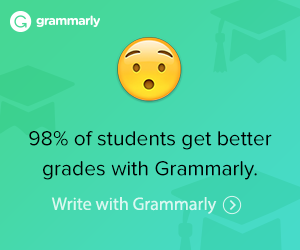
Why should your middle & high schoolers practice writing at home?
Creative writing skills are essential for many reasons .
- Foster emotional skills like empathy
- Improve higher level and abstract thinking skills
- Promote better organizational skills
- Build confidence
These middle and high school writing books are meant to inspire your adolescents. Staring at a blank paper can be intimidating for young writers. If you find your tween or teen getting “stuck,” consider purchasing one of these books. They might find the creative aha moment they need!
See 20 of the Best Journals for Kids for more inspiration!
Encourage your young writers to express themselves on paper ! Summer makes the perfect time to practice writing skills.

Would you like more book recommendations, creative writing, and reading inspiration delivered straight to your inbox? Sign up for my newsletter today!
*** MamaBookworm participates in Amazon Services LLC Associates Program, an affiliate advertising program designed to provide a means for sites to earn advertising fees by advertising and linking to Amazon.com. ***
No related posts.
you may also love

Middle Grade Series Recommendations by a MG Reader

Epic Middle School Read Alouds Sure To Excite Your Tween

Make Your Kid a Money Genius: A book Review

10 New Middle Grade Book Recommendations for Summer 2020

New Spooky Middle Grade Books to Read Today

The Hobbit: A Kid Reviewer’s Review
About Jennifer

Reader Interactions
May 25, 2021 at 8:07 am
My kids aren’t at this stage yet but it would be great to refer to this list in the future. Thanks for sharing!
May 24, 2021 at 11:35 am
You are a great resource for all sorts of reading and writing information. This is no different. This is an excellent compilation of books for this age group. Thank you for sharing!
May 24, 2021 at 11:12 am
These all look like great suggestions! My kids are all under 5, but I’m saving this for later!
We’re sorry, this site is currently experiencing technical difficulties. Please try again in a few moments. Exception: request blocked
- Yekaterinburg
- Novosibirsk
- Vladivostok

- Tours to Russia
- Practicalities
- Russia in Lists
Rusmania • Deep into Russia
Out of the Centre
Savvino-storozhevsky monastery and museum.

Zvenigorod's most famous sight is the Savvino-Storozhevsky Monastery, which was founded in 1398 by the monk Savva from the Troitse-Sergieva Lavra, at the invitation and with the support of Prince Yury Dmitrievich of Zvenigorod. Savva was later canonised as St Sabbas (Savva) of Storozhev. The monastery late flourished under the reign of Tsar Alexis, who chose the monastery as his family church and often went on pilgrimage there and made lots of donations to it. Most of the monastery’s buildings date from this time. The monastery is heavily fortified with thick walls and six towers, the most impressive of which is the Krasny Tower which also serves as the eastern entrance. The monastery was closed in 1918 and only reopened in 1995. In 1998 Patriarch Alexius II took part in a service to return the relics of St Sabbas to the monastery. Today the monastery has the status of a stauropegic monastery, which is second in status to a lavra. In addition to being a working monastery, it also holds the Zvenigorod Historical, Architectural and Art Museum.
Belfry and Neighbouring Churches

Located near the main entrance is the monastery's belfry which is perhaps the calling card of the monastery due to its uniqueness. It was built in the 1650s and the St Sergius of Radonezh’s Church was opened on the middle tier in the mid-17th century, although it was originally dedicated to the Trinity. The belfry's 35-tonne Great Bladgovestny Bell fell in 1941 and was only restored and returned in 2003. Attached to the belfry is a large refectory and the Transfiguration Church, both of which were built on the orders of Tsar Alexis in the 1650s.

To the left of the belfry is another, smaller, refectory which is attached to the Trinity Gate-Church, which was also constructed in the 1650s on the orders of Tsar Alexis who made it his own family church. The church is elaborately decorated with colourful trims and underneath the archway is a beautiful 19th century fresco.
Nativity of Virgin Mary Cathedral

The Nativity of Virgin Mary Cathedral is the oldest building in the monastery and among the oldest buildings in the Moscow Region. It was built between 1404 and 1405 during the lifetime of St Sabbas and using the funds of Prince Yury of Zvenigorod. The white-stone cathedral is a standard four-pillar design with a single golden dome. After the death of St Sabbas he was interred in the cathedral and a new altar dedicated to him was added.

Under the reign of Tsar Alexis the cathedral was decorated with frescoes by Stepan Ryazanets, some of which remain today. Tsar Alexis also presented the cathedral with a five-tier iconostasis, the top row of icons have been preserved.
Tsaritsa's Chambers

The Nativity of Virgin Mary Cathedral is located between the Tsaritsa's Chambers of the left and the Palace of Tsar Alexis on the right. The Tsaritsa's Chambers were built in the mid-17th century for the wife of Tsar Alexey - Tsaritsa Maria Ilinichna Miloskavskaya. The design of the building is influenced by the ancient Russian architectural style. Is prettier than the Tsar's chambers opposite, being red in colour with elaborately decorated window frames and entrance.

At present the Tsaritsa's Chambers houses the Zvenigorod Historical, Architectural and Art Museum. Among its displays is an accurate recreation of the interior of a noble lady's chambers including furniture, decorations and a decorated tiled oven, and an exhibition on the history of Zvenigorod and the monastery.
Palace of Tsar Alexis

The Palace of Tsar Alexis was built in the 1650s and is now one of the best surviving examples of non-religious architecture of that era. It was built especially for Tsar Alexis who often visited the monastery on religious pilgrimages. Its most striking feature is its pretty row of nine chimney spouts which resemble towers.

Plan your next trip to Russia
Ready-to-book tours.
Your holiday in Russia starts here. Choose and book your tour to Russia.
REQUEST A CUSTOMISED TRIP
Looking for something unique? Create the trip of your dreams with the help of our experts.

IMAGES
VIDEO
COMMENTS
With the help of this book, students can learn how to write any essay for their high school classes, from English and History to Math and Science. 9. Burn After Writing Teen, by Rhiannon Shove. Burn After Writing Teen, by Rhiannon Shove, is an interactive book that encourages readers to explore the big questions of life.
It begins by explaining what writing is, and then the high school essay as a genre. Chapter 1 takes the reader through the process of writing, from reading to ideation to editing; Chapter 2 demystifies the dreaded Five-Paragraph Essay.
Here is our collection of writing books for middle and high school students: 1. Be a Better Writer: For School, For Fun, For Anyone Ages 10-15, by Steve Peha, Margot Carmichael Lester. Be a Better Writer: For School, For Fun, For Anyone Ages 10-15 is a book written by Steve Peha and Margot Carmichael Lester to help you become a better writer.
Silvia Rosenthal Tolisano and Janet A. Hale's A Guide to Documenting Learning: Making Thinking Visible, Meaningful, Shareable, and Amplified (Corwin, 2018) provides a much-needed road map to shifting the focus of school (and writing!) from grades to learning. Working from the premise that learning and documenting—like writing—are ongoing ...
This book is a fun, clear and engaging guide to writing better essays and achieving higher grades. Written to address common difficulties raise by students in high school education, Write That Essay! High School Edition is the essential guide for improving writing skills and achieving better grades. Written by a former university professor, the ...
IEW® in High School. The high school years can be daunting, but writing does not have to be. IEW teaches students how to navigate the essays, research papers, and literary analysis that they will need to succeed in high school and beyond. IEW's pathway for high school is designed to help beginning students gain confidence while continuing to ...
Paperback : 208 pages. ISBN-10 : 0768920639. ISBN-13 : 978-0768920635. Grade level : 10 - 12. Item Weight : 11.2 ounces. Dimensions : 7.25 x 0.5 x 9 inches. Best Sellers Rank: #1,125,796 in Books ( See Top 100 in Books) #240 in Teen & Young Adult Composition & Creative Writing.
What do high school teachers expect from your writing? Here's the inside information on how your teachers think.If writing essays is challenging for you -- or if you want to turn a B essay into an A essay -- you'll want to read this book. How To Write Any High School Essay is the essential, easy-to-use, and comprehensive guide for any high school essay you could ever want to write -- no matter ...
This book is a fun, clear and engaging guide to writing better essays and achieving higher grades. Written to address common difficulties raise by students in high school education, Write That Essay! High School Edition is the essential guide for improving writing skills and achieving better grades. Written by a former university professor, the book gives an inside look at what those who grade ...
Books. Essay Writing for High School Students. Alexander L. Terego. Peterson's, 2005 - Juvenile Nonfiction - 208 pages. With new writing components on the SAT and ACT, and the increasing importance of college application essays, writing skills are on the minds of students and teachers everywhere. This brand-new, student friendly guide provides ...
Essay Writing for High School Students: A Step-by-Step Guide is an indispensable guide to help students' words leap off the page. Tailored specifically to high school students, it includes: * Details on how to write a winning essay, whether for the college application or for a standardized test such as the SAT or ACT* Real essays that illustrate how to develop sample ideas* Advice on how to ...
Our 2020-21 Writing Curriculum for Middle and High School. A flexible, seven-unit program based on the real-world writing found in newspapers, from editorials and reviews to personal narratives ...
ESSAY WRITING PARAGRAPH WRITING TIPS. Each paragraph should focus on a single main idea. Paragraphs should follow a logical sequence; students should group similar ideas together to avoid incoherence. Paragraphs should be denoted consistently; students should choose either to indent or skip a line.
It begins by explaining what writing is, and then the high school essay as a genre. Chapter 1 takes the reader through the process of writing, from reading to ideation to editing; Chapter 2 demystifies the dreaded Five-Paragraph Essay.
Amazon. Take your writing skills to the next level with these fun and creative story starters for teens. This workbook contains over 100 creative writing prompts for middle and high school teenagers. Kids in grades 8-12 will get plenty of ideas for their next Language Arts class, short story assignment, or storytelling project.
As seen on CNN, Forbes, and Inc, BookAuthority features the books recommended by experts. We may earn commissions for purchases made via this page. Recommendations by Mike P. "Ontario Dad" Moffatt, Raul Pachecovega, Inger Mewburn, The Wall Street Journal and 40 others. 1.
Distance: 114.47 mi (184.22 km) The shortest distance (air line) between Moscow and Ryazan is 114.47 mi (184.22 km).. Driving route: -- (- ) The shortest route between Moscow and Ryazan is according to the route planner. The driving time is approx. .
Paperback. $33.15 18 Used from $1.57. Essay Writing for High School Students: A Step-by-Step Guide is an indispensable guide to help students' words leap off the page. Tailored specifically to high school students, it includes: * Details on how to write a winning essay, whether for the college application or for a standardized test such as the ...
Essay Writing for High School Students: A Step-by-Step Guide 2nd Edition by Newsweek Education Program (Author) 4.2 4.2 out of 5 stars 4 ratings
GENERAL AFFIDAVIT Russian Federation..... ) Moscow Oblast ..... ) City of Moscow.....
Zvenigorod's most famous sight is the Savvino-Storozhevsky Monastery, which was founded in 1398 by the monk Savva from the Troitse-Sergieva Lavra, at the invitation and with the support of Prince Yury Dmitrievich of Zvenigorod. Savva was later canonised as St Sabbas (Savva) of Storozhev. The monastery late flourished under the reign of Tsar ...
Writing High School Essays With Advanced English Grammar. Print length. 148 pages. Language. English. Publication date. November 12, 2016. Dimensions. 8.5 x 0.35 x 11 inches. ISBN-10. 1540336514. ISBN-13. 978-1540336514. See all details. Next page. The Amazon Book Review Book recommendations, author interviews, editors' picks, and more.
Moscow Oblast on Amazon.com. *FREE* shipping on qualifying offers. Moscow Oblast